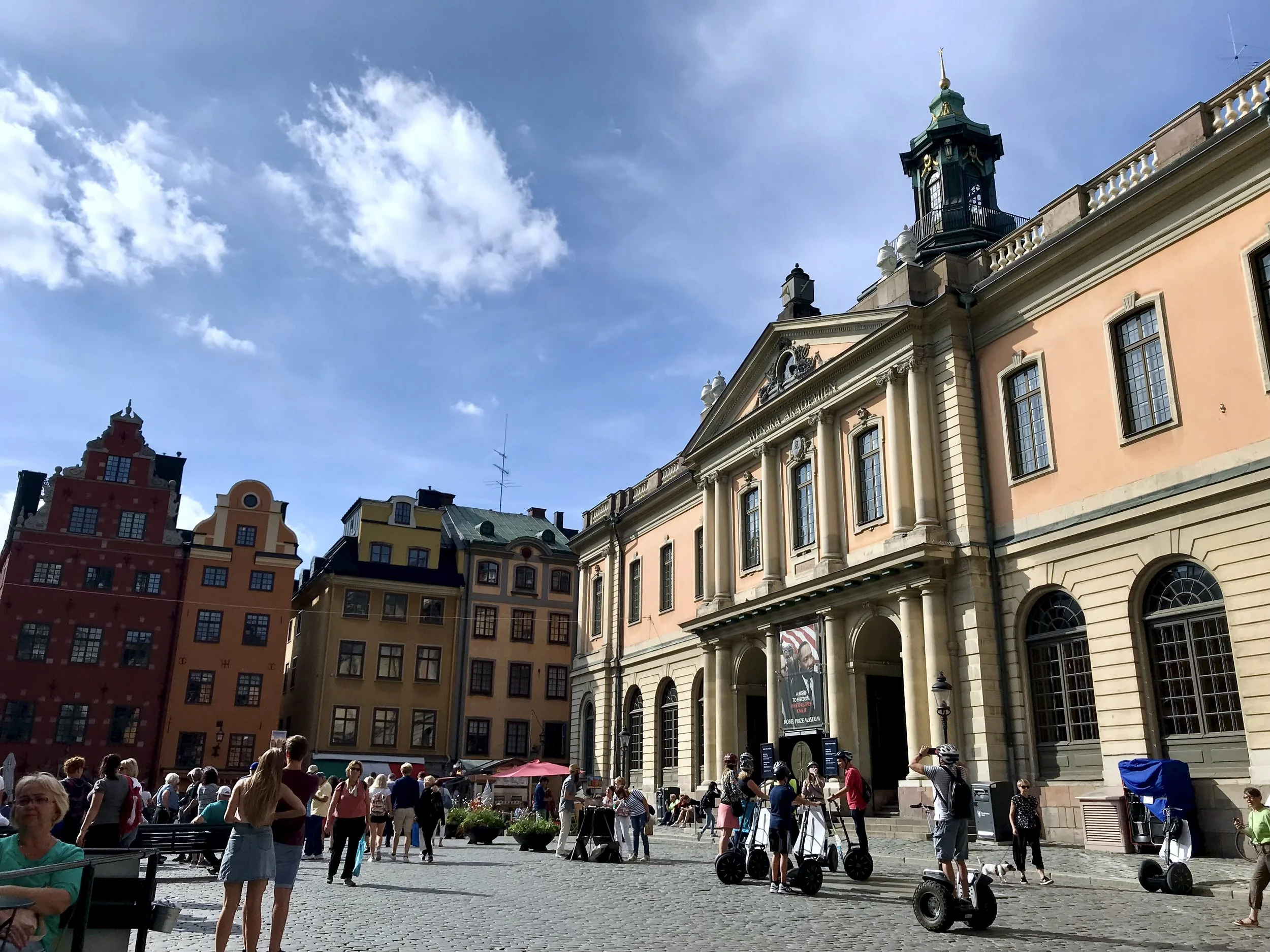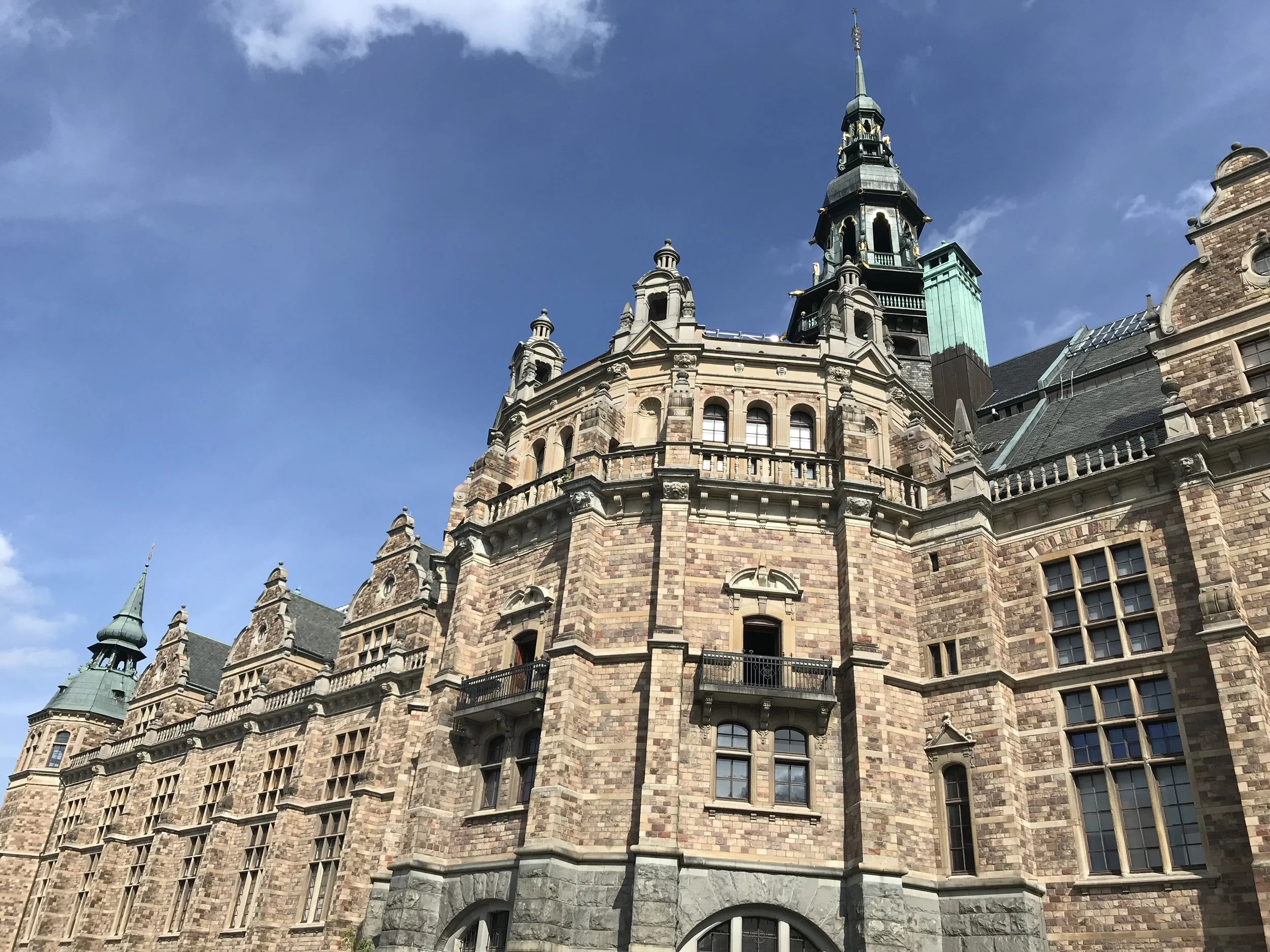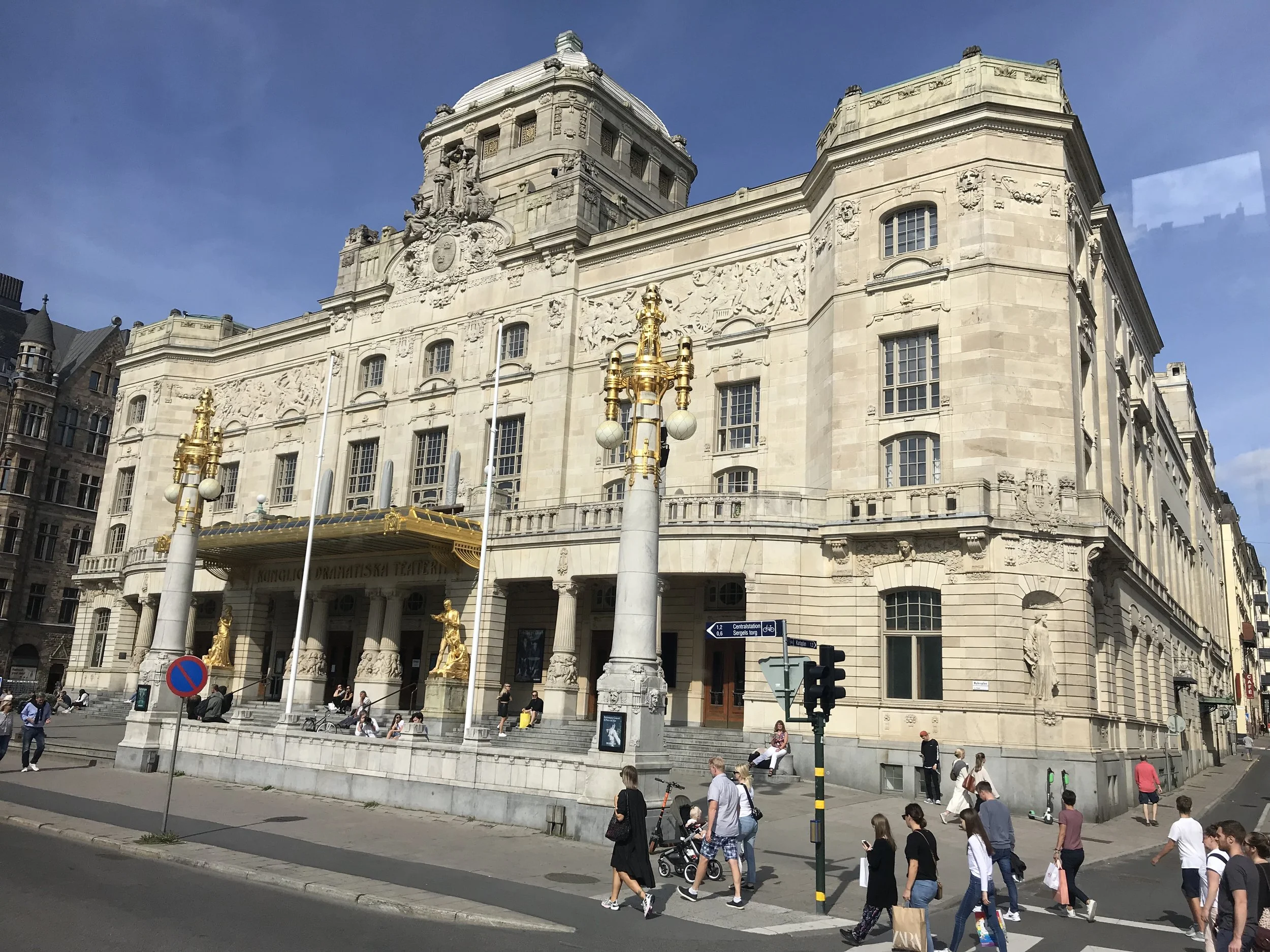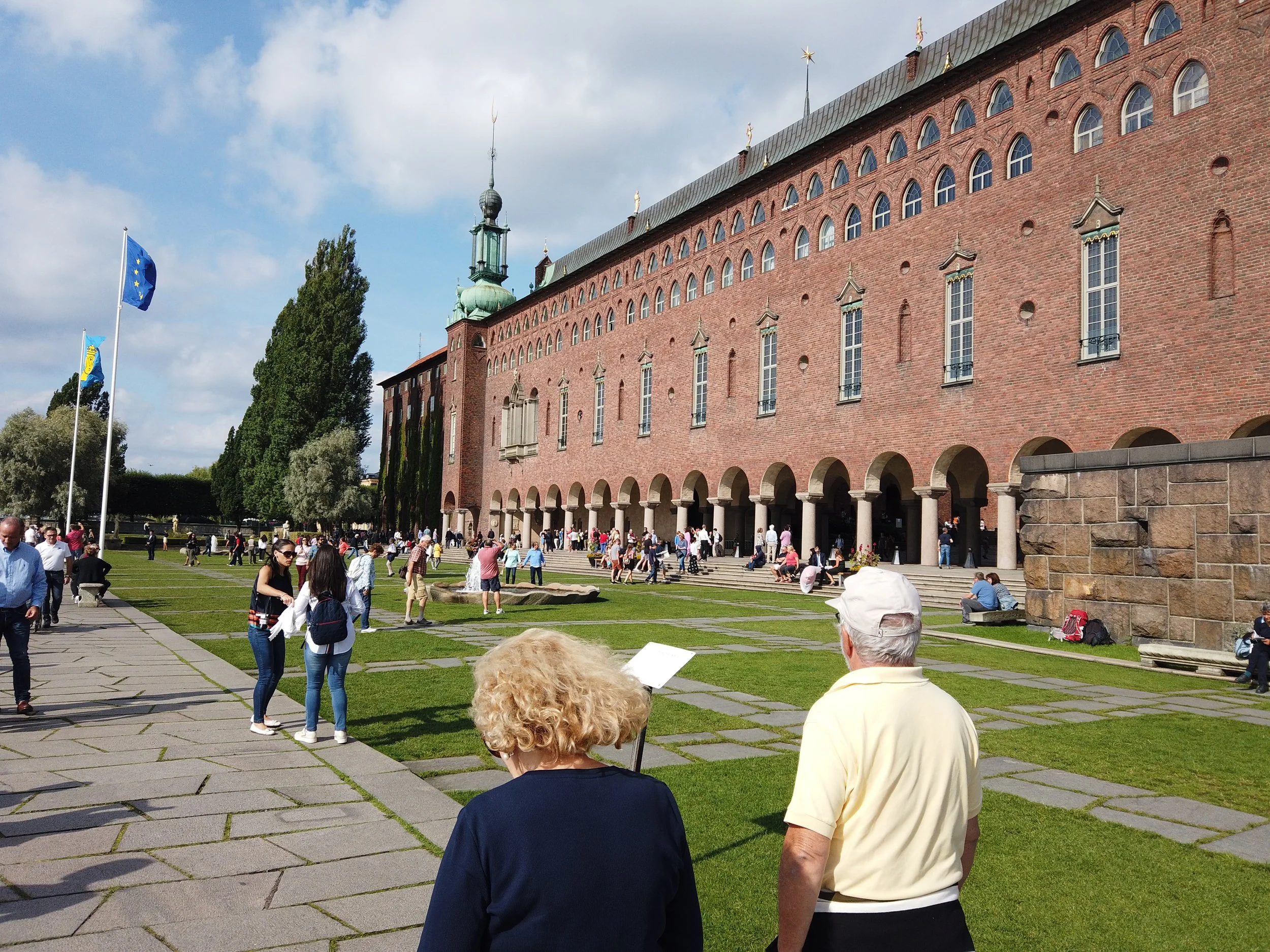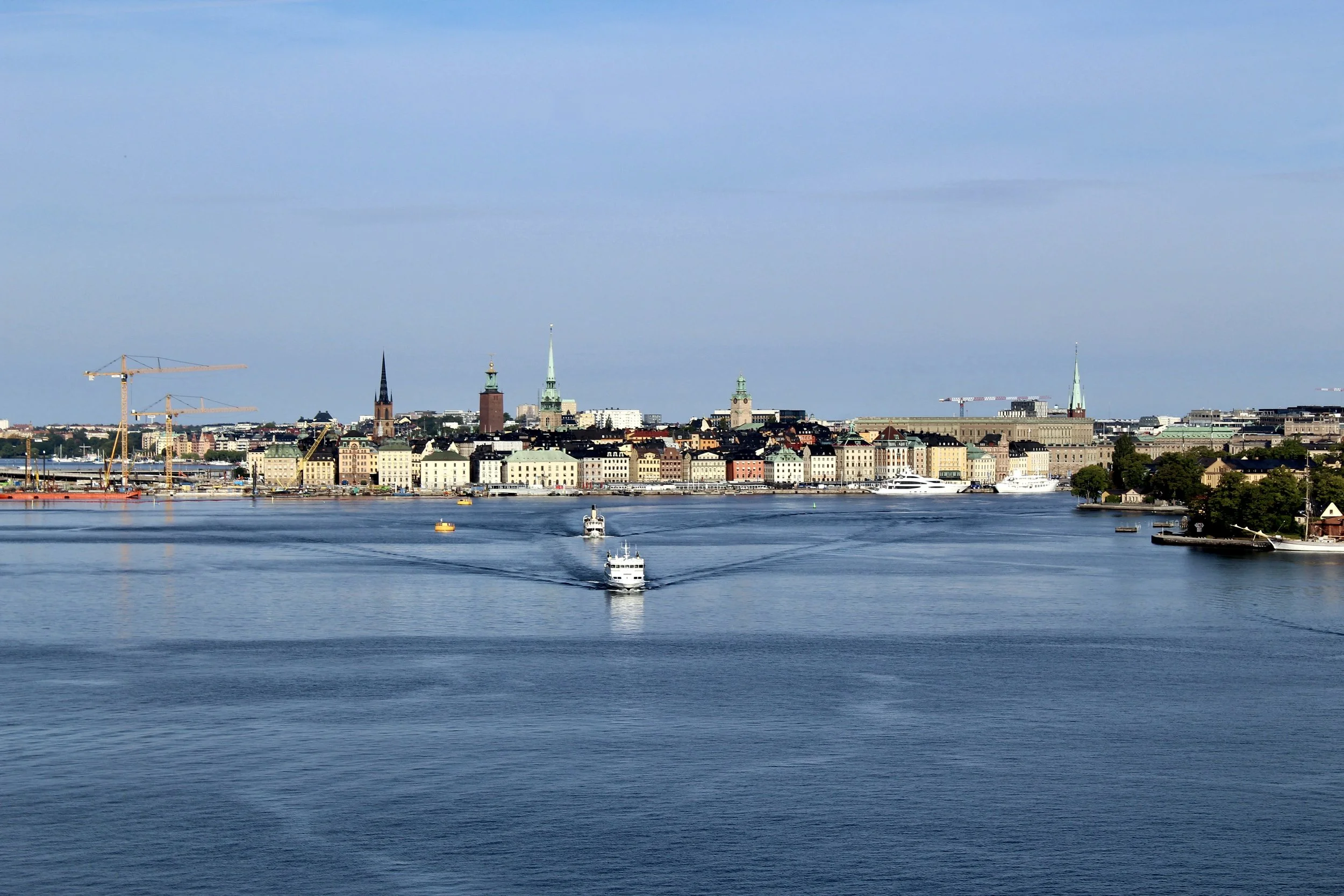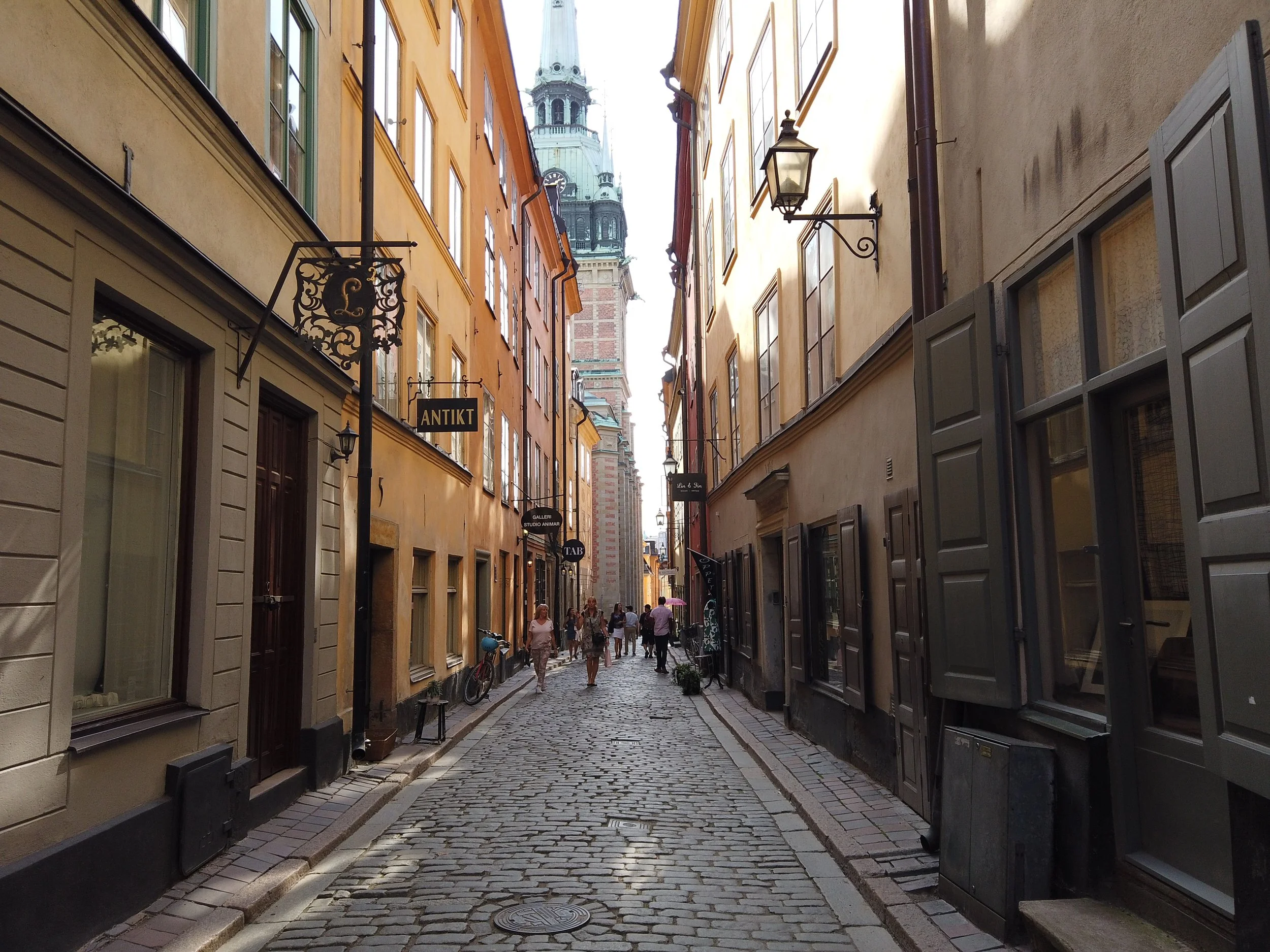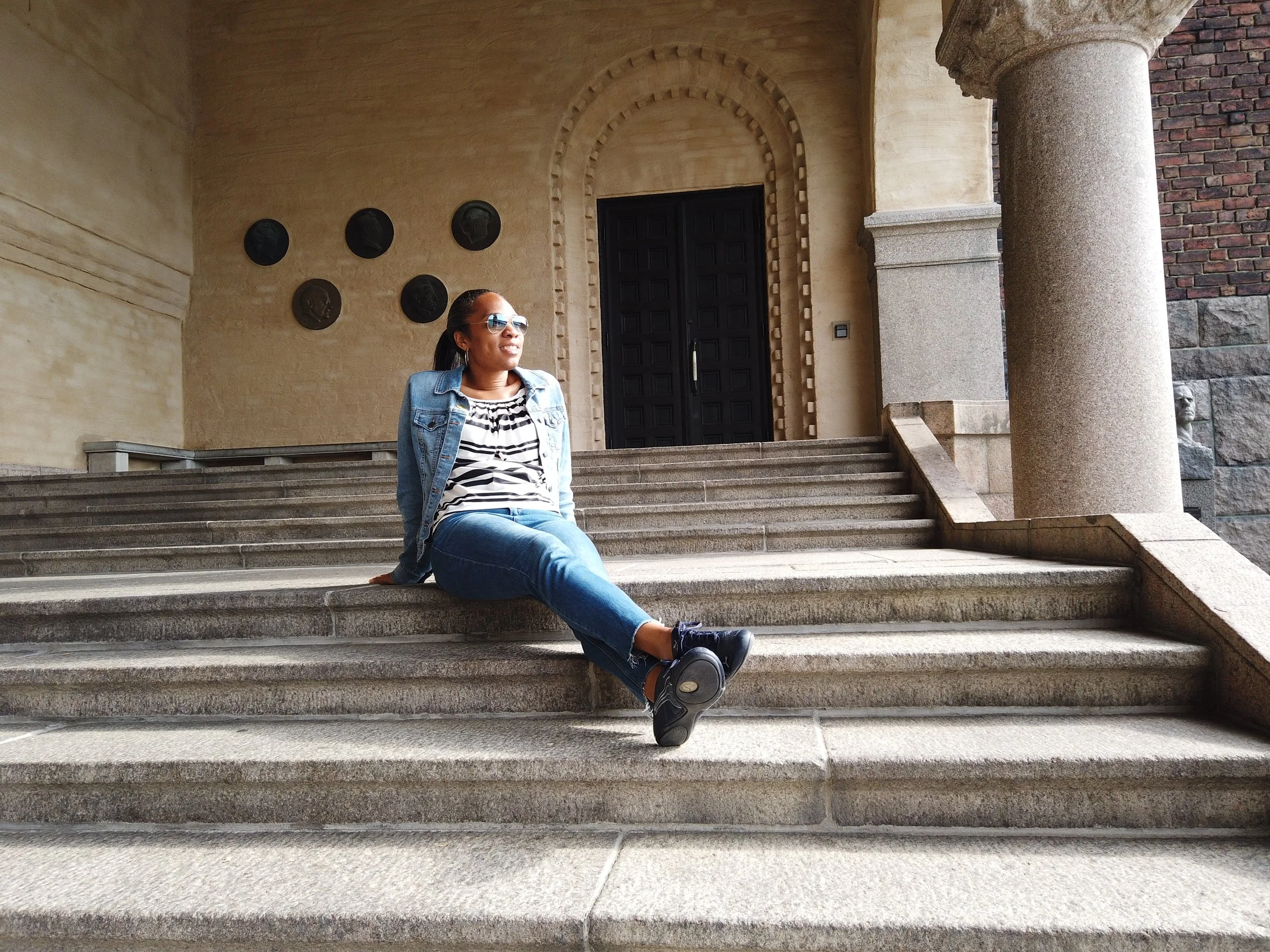Stockholm Sweden
We arrived in Stockholm early in the morning, and you get a long beautiful look at the area before you even dock. The ship moves through a stretch of narrow waterways where small islands appear one after another. Some have clusters of red or mustard colored houses right along the shoreline. Others are mostly trees, rock, and the occasional dock or cottage. Stockholm is not one solid block of land. It is a collection of islands connected by bridges and ferries, and the water shows up in almost every direction.
Gamla Stan
Our tour started in Gamla Stan, the Old Town. This part of the city feels older as soon as you step into it. The streets are narrow, the stones are worn smooth, and the buildings are close together. Most are painted in warm colors like deep red, orange, mustard, or soft yellow, and even though the architecture is simple, the age of everything gives the area a steady charm.
Stortorget, the main square, is right in the center. The buildings around it have steep roofs and tall façades, each painted a different shade. The Nobel Prize Museum sits along one side in a building that blends in more than you’d expect. The streets that lead away from the square curve outward into tight little lanes where you find cafés, shops, and small courtyards tucked between the older buildings. On a warm summer day these streets can feel very tight once the crowds start moving through, but that is also part of what makes the area feel so lived in.
Kanelbullar
We stopped at a bakery nearby and tried kanelbullar, the Swedish version of cinnamon rolls. They’re smaller than American ones and not covered in icing. The flavor leans on cinnamon and cardamom, and the dough has a warm sweetness that comes through without being heavy. I liked them so much that when I got home, I learned how to make them myself.
Leaving the Old Town, the bus crossed one of the many bridges that tie the city together. The streets opened up, the architecture shifted, and you could see the more modern side of Stockholm. From there we headed to Djurgården, an island known for its museums, parks, and easy waterfront walking paths. It feels calmer as soon as you arrive, with trees and water appearing in almost every direction.
The Vasa
The Vasa Museum was one of our main stops. The museum exists because of one ship — the Vasa — a seventeenth century warship that sank on its very first voyage and stayed underwater for more than three hundred years before being raised in the 1960s. Today the building is designed around it. When you walk inside, the ship fills the entire hall. You can move around it on multiple levels, and the carvings are detailed enough that you can pick out faces, animals, and patterns along the sides. The exhibits explain how the ship was built, why it sank, and how it was eventually preserved.
Nordic Museum
Right next door is the Nordic Museum. From the outside it looks like a massive stone palace with a tall central tower and long wings on either side. The walkway leading up to it is lined with trees. Inside, the lobby opens into a bright central hall with a high ceiling and tall columns. The galleries off to the sides focus on Swedish life, including clothing, design, household objects, and folk traditions. Upper walkways overlook the hall, so you can see how the building is arranged as you explore.
Gröna Lund from the water
A short walk along the waterfront brought us to Gröna Lund, the amusement park. The roller coasters rise above the shoreline, and the bright colors stand out against the more muted tones of the nearby buildings. Cirkus Arena is close by too, a round performance venue used for concerts and shows. This part of Djurgården blends museums, entertainment, and quiet green space in a way that makes the island feel like its own little district.
Back on the mainland, we passed the Royal Dramatic Theatre. The building is light in color with gold detailing that stands out even under a cloudy sky. The front steps give you a clean view of the façade as you walk by.
Stockholm City Hall
Then we headed to Stockholm City Hall, which sits right along the water. It is a deep red brick building with a tall tower you can spot from across the city. The courtyard behind it opens onto a long walkway facing the water, and from there you get a clear look at the opposite shoreline, lined with a mix of older buildings and newer ones.
Inside is where the building becomes more interesting. This is where the Nobel Prize banquet is held every year. There is a wide staircase leading down into the main hall, and it was designed so that women wearing long gowns could walk down without worrying about tripping. Once you look at the shape of the steps, you can see how intentionally it was built.
Inside the Golden Hall
Farther inside is the Golden Hall, covered from floor to ceiling in gold mosaics — more than a million tiles total. One of the main mosaics shows a seated woman holding a model of Stockholm, surrounded by scenes of ships, people, and symbols from Swedish history. The gold tiles reflect light as you walk, giving the room a steady warm glow.
After the tour we returned to Gamla Stan to shop and walk. The streets make more sense the longer you stay. Some slope toward the water, others twist into little open spaces, and most of them have a café or a store tucked somewhere along the block. The older buildings give the neighborhood a consistent look, and you can wander through several streets without breaking the feel of it.
Throughout the day it became clear how connected Stockholm is. The water shows up in nearly every direction. Bridges link the islands, ferries run constantly, and the neighborhoods shift slowly as you walk. Even with limited time, the city makes sense quickly. It ended up being my favorite stop of the trip because everything moved at a comfortable pace and the city itself was relaxing to explore.
Stockholm from the water
How to Get Around
Stockholm is very easy to navigate.
Transit
Stockholm is easy to get around without a car. The city uses a mix of buses, trams, the Tunnelbana (their metro), and ferries. All of them are part of the same public transit system. You can tap a card or buy a short-term pass, and the routes run on regular schedules that are easy to follow.
Ferries
The ferries are not tourist boats. They work just like buses, but on the water, and they move between several of the main islands. Taking one gives you a clear view of how the city is spread out, and it’s one of the easiest ways to understand the layout without doing anything extra.
Currency
Sweden uses the Swedish krona (SEK).
You can pay with card everywhere — even small bakeries and market stalls.
Cash isn’t needed, and some places won’t accept it at all.
Food to Try
Kanelbullar
Cinnamon-cardamom rolls that are smaller, less sweet, and a lot more flavorful than American rolls.
Fika
Not a food, but a tradition — a pause for coffee or tea and something sweet.
Even if you don’t drink coffee, fika cafés are everywhere and easy to enjoy.
Seafood
The city is surrounded by water, so fish dishes are common.
You’ll find salmon, shrimp, and open-faced sandwiches in many cafés.
Quick Tips
• Djurgården can be reached by ferry, tram, or bus — all simple.
• City Hall interior tours are scheduled, so check the timing in advance.
• Gamla Stan is best earlier in the morning before crowds take over.
• The metro has art installations in many stations worth peeking at.
• Most museums on Djurgården are close enough to walk between.
If You Have More Time
Södermalm
A relaxed neighborhood with cafés, scenic viewpoints, and quieter streets.
Östermalm
More polished and residential, with upscale shops and calmer corners.
Ferry rides
A great way to understand the layout of the city’s islands.
Skansen
An open-air museum and zoo with traditional Swedish buildings and demonstrations.


